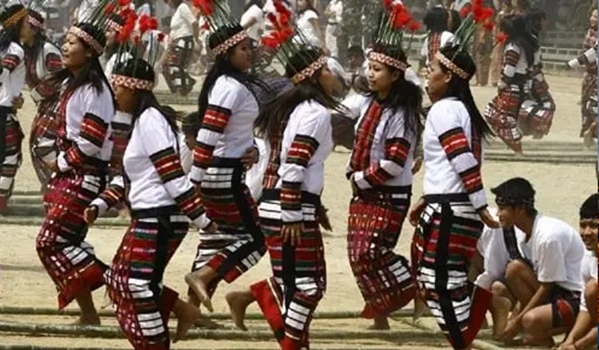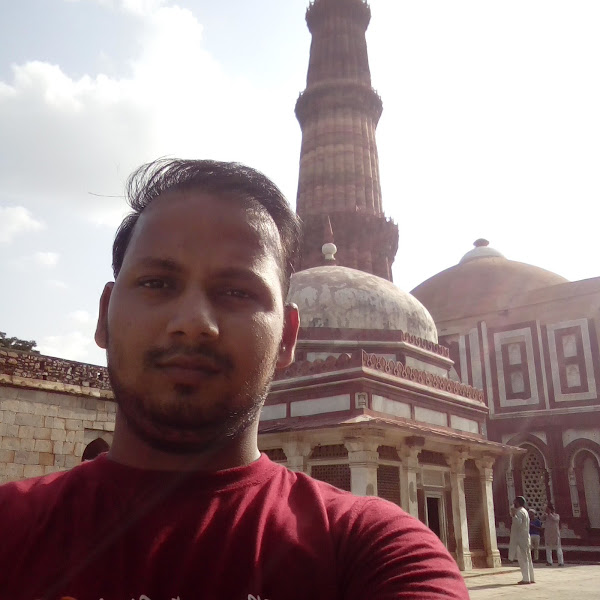Mizoram, known as the “Land of the Highlanders”, is a state in Northeast India that boasts a vibrant blend of tribal traditions, music, and dance forms. The culture of Mizoram is deeply rooted in the Mizo community’s history, folklore, and agricultural lifestyle. Unlike many other Indian states where classical dance dominates, Mizoram thrives on tribal folk dances that showcase unity, festivity, and storytelling.
Most dances are performed in groups, accompanied by traditional instruments like drums, gongs, and bamboo pipes. They are closely tied to festivals such as Chapchar Kut, Pawl Kut, and Mim Kut, which mark the agricultural calendar. Among these, the Cheraw or Bamboo Dance has gained worldwide recognition as the cultural identity of Mizoram.

List of Major Traditional and Folk Dances of Mizoram
| Dance Name | Type | Region/Community | Short Description |
| Cheraw | Bamboo / Cultural | Entire Mizoram | Famous bamboo dance with rhythmic clapping of bamboos. |
| Khuallam | Festive / Social | Performed at festivals | Group dance performed by men in traditional puan chei. |
| Chheihlam | Musical / Festive | Central Mizoram | Dancers move in rhythm with drums and singing. |
| Chai Dance | Festival Dance | Performed at Chapchar Kut | Circle dance symbolizing friendship and community. |
| Solakia | Warrior / Storytelling | Lusei tribe | Dance depicting hunting and war exploits. |
| Chawnglaizawn | Romantic / Festive | Performed at youth gatherings | Dance of joy, performed by young boys and girls. |
| Sarlamkai | Martial / Victory | Mizo Tribes | Victory dance celebrating success in battle. |
| Par Lam | Social / Festive | Various tribes | Dance performed during community gatherings and feasts. |
Detailed Explanation of Major Dances
- Cheraw – The World-Famous Bamboo Dance
- Origin: Believed to date back to the 1st century, originally performed to bid farewell to a deceased mother during childbirth. Over time, it evolved into a festive dance.
- Cultural Significance: Known as the signature dance of Mizoram, Cheraw represents coordination, rhythm, and unity.
- Costumes: Women wear colorful puan (traditional handwoven dress) with floral headgear.
- Instruments: Bamboo poles, drums, and gongs.
- Occasions: Mostly performed during Chapchar Kut Festival, but also on Independence Day and cultural events.
- Image Suggestion: Women dancing gracefully between bamboo poles held and clapped by men.
- Khuallam – The Dance of Guests
- Origin: Traditionally performed when visitors gathered for a grand feast organized by a chief or a wealthy family.
- Cultural Significance: Symbol of community bonding and hospitality.
- Costumes: Men wear the puan chei (handwoven cloth with red, black, and white designs).
- Instruments: Drums and gongs set the rhythm.
- Occasions: Performed during Pawl Kut and Mim Kut festivals, as well as at public gatherings.
- Image Suggestion: Men in puan chei performing Khuallam in a line formation.
- Chheihlam – Dance of Music and Cheer
- Origin: Originated from the tradition of singing Mizo folk songs in groups after a day’s work.
- Cultural Significance: Represents happiness, storytelling, and relaxation after labor.
- Costumes: Simple puans with minimal ornaments.
- Instruments: Large drum called chheih.
- Occasions: Commonly performed at Chapchar Kut and during informal gatherings.
- Image Suggestion: Men and women sitting and dancing with synchronized claps to drum beats.
- Chai Dance – The Festival Circle Dance
- Origin: Performed during Chapchar Kut, one of the most important festivals of Mizoram.
- Cultural Significance: Symbolizes friendship, joy, and collective celebration.
- Costumes: Women wear bright traditional puans, and men wear white coats with headscarves.
- Instruments: Drums, gongs, and bamboo pipes.
- Occasions: Performed exclusively during Chapchar Kut festival.
- Image Suggestion: Large groups dancing hand-in-hand in circles.
- Solakia – The Dance of Warriors
- Origin: Belongs to the Lusei tribe, performed to honor brave warriors and hunters.
- Cultural Significance: Narrates heroic deeds, hunting expeditions, and tribal bravery.
- Costumes: Men wear traditional warrior attire with spears and shields.
- Instruments: Drum beats emphasize warrior movements.
- Occasions: Celebrated during tribal festivals and storytelling gatherings.
- Image Suggestion: Dancers dressed as warriors with spears and shield
- Chawnglaizawn – Dance of Joy and Youth
- Origin: Emerged as a youth community dance in villages.
- Cultural Significance: Represents romance, joy, and youthful energy.
- Costumes: Young women wear handwoven puans with floral designs, while men wear puan chei.
- Instruments: Gongs and flutes accompany the rhythm.
- Occasions: Performed at weddings, youth festivals, and community gatherings.
- Image Suggestion: Young men and women dancing together in colorful attire.
- Sarlamkai – The Victory Dance
- Origin: Historically performed by Mizo warriors after a successful battle.
- Cultural Significance: Symbol of strength, valor, and triumph.
- Costumes: Men wear warrior headgear, animal skins, and carry spears.
- Instruments: Drums and war chants accompany the performance.
- Occasions: Today, performed during cultural festivals to showcase Mizo heritage.
- Image Suggestion: Performers in warrior outfits reenacting battle scenes.
- Par Lam – Community Dance of Togetherness
- Origin: Derived from the Mizo word Par (festival), symbolizing celebration.
- Cultural Significance: A social dance highlighting unity and friendship among villagers.
- Costumes: Men and women wear colorful puans and headgear.
- Instruments: Drums and bamboo pipes.
- Occasions: Performed at community feasts and festivals.
- Image Suggestion: Villagers in traditional attire performing Par Lam in a group.
FAQs
Q1. Which is the most famous dance of Mizoram?
👉 The Cheraw (Bamboo Dance) is the most famous dance of Mizoram, often showcased at national and international cultural events.
Q2. How many folk dances does Mizoram have?
👉 Mizoram has more than 8 prominent folk dances, including Cheraw, Khuallam, Chheihlam, Solakia, and Chai Dance.
Q3. Are Mizoram’s dances only performed during festivals?
👉 While most dances are festival-oriented, some like Chheihlam and Chawnglaizawn are also performed at informal gatherings and weddings.
Q4. Which festival of Mizoram is most associated with dances?
👉 The Chapchar Kut festival is the grandest event, where almost all traditional dances like Cheraw, Chai, and Chheihlam are performed.
Conclusion
The folk dances of Mizoram are more than artistic expressions; they are living traditions that preserve the stories, beliefs, and unity of the Mizo people. From the world-famous Cheraw that captivates audiences with bamboo rhythms to the warrior Solakia and joyful Chheihlam, each dance highlights the community spirit and resilience of Mizoram.
These dances not only entertain but also act as a cultural bridge, connecting generations and reminding the Mizo community of their rich tribal heritage. As Mizoram continues to modernize, its folk dances remain the heartbeat of its cultural identity, celebrated across India and the world.

Hello, I’m Kapil Kumar, a seasoned SEO expert and blogger at WinnersList.in. My mission is to spotlight exceptional individuals and organizations across various domains. Through curated lists, profiles, and inspiring stories, I aim to celebrate outstanding achievements and inspire the next generation of champions. Join me in this journey.
